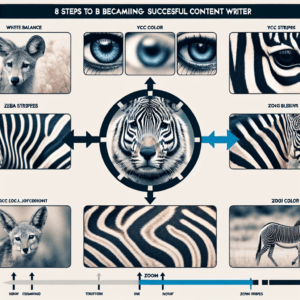Choosing The Right Blogging Platform In 2025
Choosing the right blogging platform in 2025 is one of the most crucial decisions you’ll make when starting your blog. With the digital landscape evolving rapidly, the options available today are more diverse and powerful than ever before. However, this abundance of choice can also be overwhelming for beginners. To make an informed decision, it’s essential to understand the key features, advantages, and limitations of the most popular platforms currently available.
To begin with, consider your blogging goals. Are you planning to write casually as a hobby, or are you aiming to build a professional brand or monetize your content? Your answer will significantly influence the platform you choose. For instance, if you’re looking for simplicity and ease of use, platforms like Medium or Substack might be ideal. These platforms offer minimal setup, built-in audiences, and user-friendly interfaces, making them perfect for writers who want to focus solely on content creation without worrying about design or technical maintenance.
On the other hand, if customization and scalability are important to you, WordPress.org remains a top choice in 2025. Unlike its hosted counterpart, WordPress.com, the self-hosted version gives you full control over your website’s design, functionality, and monetization options. With thousands of themes and plugins available, you can tailor your blog to meet your exact needs. However, this flexibility comes with a steeper learning curve and the responsibility of managing your own hosting and security.
Speaking of hosting, it’s worth noting that many modern blogging platforms now offer integrated hosting solutions. Platforms like Wix and Squarespace provide all-in-one packages that include hosting, design tools, and customer support. These are excellent options for beginners who want a visually appealing blog without dealing with the technical aspects of website management. Moreover, their drag-and-drop editors make it easy to create a professional-looking site in just a few hours.
As we move further into 2025, newer platforms are also gaining traction, particularly those that integrate with Web3 technologies. Decentralized blogging platforms such as Mirror.xyz are becoming increasingly popular among tech-savvy users who value data ownership and blockchain-based monetization. While these platforms are still in their early stages, they offer exciting possibilities for the future of content creation and distribution.
Another important factor to consider is your target audience. If your readers are likely to discover your content through search engines, choosing a platform with strong SEO capabilities is essential. WordPress.org excels in this area, offering numerous plugins that help optimize your content for search visibility. Conversely, if your audience is more likely to engage through email newsletters or social media, platforms like Substack or Ghost may be more effective, as they are designed with audience engagement and subscription models in mind.
Ultimately, the best blogging platform for you in 2025 will depend on your individual needs, technical skills, and long-term goals. Take the time to explore different options, read user reviews, and even test out a few platforms before making your final decision. By choosing the right foundation for your blog, you’ll set yourself up for success and ensure a smoother journey as you grow your online presence.
Crafting Engaging Content That Attracts Readers

Creating a successful blog in 2025 requires more than just setting up a website and publishing random thoughts. At the heart of every thriving blog lies compelling content that resonates with readers and keeps them coming back for more. Crafting engaging content is both an art and a science, and understanding how to strike the right balance between value, authenticity, and readability is essential for any beginner blogger.
To begin with, it’s important to identify your target audience. Knowing who you are writing for allows you to tailor your content to their interests, needs, and preferences. Whether your blog focuses on travel, technology, wellness, or personal finance, understanding your readers’ pain points and aspirations will help you create posts that are not only informative but also emotionally engaging. Conducting audience research through surveys, social media interactions, or keyword analysis can provide valuable insights into what your readers are truly looking for.
Once you have a clear picture of your audience, the next step is to develop a content strategy. This involves planning the types of posts you will publish, how often you will post, and the tone and style you will use. A well-thought-out content calendar can help you stay consistent and organized, which is crucial for building trust and credibility with your readers. Consistency doesn’t mean posting daily, but rather maintaining a regular schedule that your audience can rely on.
Equally important is the quality of your writing. In 2025, readers expect content that is not only well-written but also easy to digest. Use clear language, break up long paragraphs, and incorporate headings and bullet points to enhance readability. Storytelling can also be a powerful tool—sharing personal experiences or real-life examples can make your content more relatable and memorable. However, it’s essential to strike a balance between storytelling and delivering actionable information. Readers appreciate content that entertains, but they value content that educates and solves problems even more.
In addition to strong writing, incorporating multimedia elements can significantly boost engagement. Images, infographics, videos, and even interactive tools can make your blog posts more dynamic and visually appealing. These elements not only help illustrate your points but also cater to different learning styles, making your content accessible to a broader audience. Moreover, optimizing your content for search engines by using relevant keywords, meta descriptions, and internal links can increase your visibility and attract organic traffic.
Another key aspect of engaging content is encouraging interaction. Inviting readers to leave comments, share their opinions, or ask questions fosters a sense of community and makes your blog feel more like a conversation than a monologue. Responding to comments and engaging with your audience on social media further strengthens this connection and builds loyalty over time.
Ultimately, crafting engaging content is about delivering value in a way that feels authentic and meaningful. By understanding your audience, planning strategically, writing clearly, and encouraging interaction, you can create blog posts that not only attract readers but also inspire them to return. As you continue to refine your voice and adapt to feedback, your blog will evolve into a trusted resource that stands out in the crowded digital landscape of 2025.
Monetizing Your Blog Effectively From Day One
Monetizing your blog effectively from day one requires a strategic approach that balances quality content creation with smart revenue-generating tactics. While it may be tempting to focus solely on writing and publishing posts, integrating monetization strategies early on can set the foundation for long-term success. To begin, it’s essential to understand your niche and target audience. Knowing who you are writing for allows you to tailor your content to their interests, which in turn makes your blog more attractive to potential advertisers, sponsors, and affiliate partners.
Once you have a clear understanding of your audience, the next step is to choose the right monetization methods that align with your blog’s purpose and tone. One of the most accessible ways to start earning is through affiliate marketing. By promoting products or services relevant to your niche and including affiliate links within your content, you can earn a commission for every sale made through your referral. To maximize effectiveness, ensure that the products you recommend are genuinely useful to your readers and that your endorsements are transparent and trustworthy.
In addition to affiliate marketing, display advertising can provide a steady stream of passive income. Platforms like Google AdSense allow you to place ads on your blog, generating revenue based on impressions or clicks. However, it’s important to strike a balance between monetization and user experience. Overloading your site with ads can deter visitors and reduce engagement, so be selective about ad placement and frequency.
Another viable option is offering sponsored content. As your blog gains traction, brands may approach you to write posts that feature their products or services. Alternatively, you can proactively reach out to companies that align with your niche. When crafting sponsored posts, maintain your blog’s voice and integrity to ensure that the content remains valuable and authentic to your readers. Transparency is key—always disclose sponsored content to maintain trust with your audience.
Moreover, consider creating and selling your own digital products. E-books, online courses, templates, and exclusive content can provide significant income while establishing you as an authority in your field. This approach not only diversifies your revenue streams but also deepens your relationship with your audience by offering them tailored solutions to their problems. To succeed in this area, focus on delivering high-quality, actionable content that addresses specific needs within your niche.
Email marketing is another powerful tool for monetization. Building an email list from the outset allows you to communicate directly with your readers, promote your products or affiliate offers, and drive traffic back to your blog. Offering a free lead magnet—such as a downloadable guide or checklist—in exchange for email sign-ups can accelerate list growth and enhance your monetization efforts.
Finally, track your performance regularly using analytics tools. Understanding which posts generate the most traffic, which affiliate links convert best, and how users interact with your site can help you refine your strategies over time. By continuously optimizing your approach and staying attuned to your audience’s needs, you can build a profitable blog from the very beginning. With patience, consistency, and a clear monetization plan, your blog can evolve into a sustainable online business.



